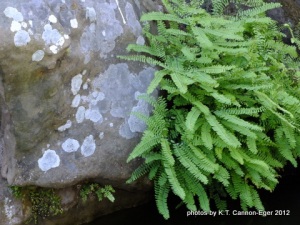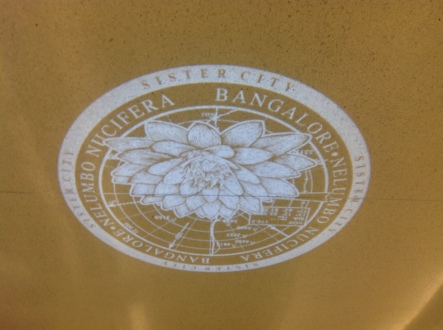Some of our readers have asked for a little detail on our railroad adventure: what lines we rode, what the stations were like, how was the food and who got the upper berth.
There is no way my husband and I could have made this trip from Atlanta to the San Francisco Bay area if it were not for Amtrak. The same trip by air would have been prohibitively expensive and not nearly as enjoyable.
Everywhere we went, we reveled in the anxiety-free wonder of looking out large windows at the cityscapes and countryside. It’s no wonder that the Amtrak motto is “Change the Way You See the World.”
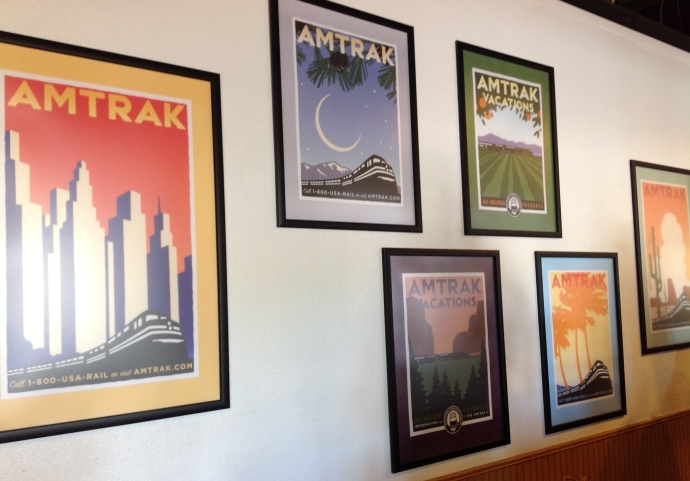
On the wall of the Grand Junction, Colorado, station is a small sampling of Amtrak posters offering guided train tours.
On every train, we found engaging and delightful conversation with a wide range of fellow travelers from Switzerland, Canada, China, Australia, Holland, France, and so many states that I’ve lost count. Families were traveling with their children and grandchildren. Businesspeople were going to work or coming home from conferences. Young couples were honeymooning, older couples were celebrating wedding anniversaries. All in all a wonderful mix.
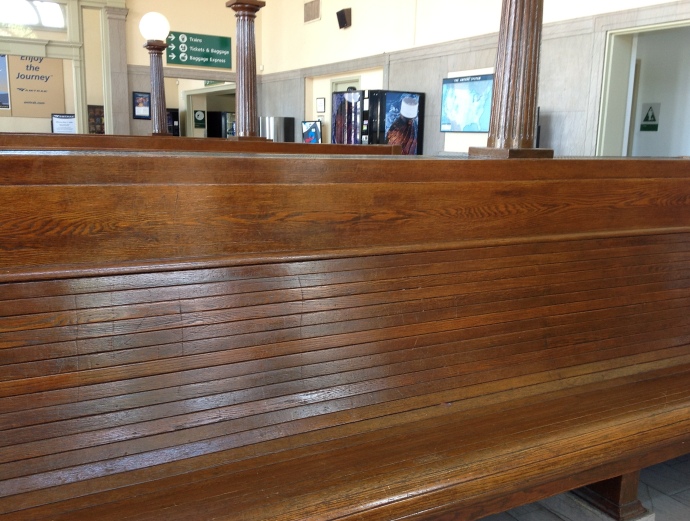
Our first train station in Atlanta, Georgia, still had the comfortable old style curved wooden benches with tall globe lamps.
Baggage allotment is similar to that of airplanes in size and weight of luggage to be checked — and we had to do some quick switching to get the large red suitcase lighter by moving several one-pound bags of Hilo Coffee Mill whole bean coffee to the smaller purple suitcase. Giving away omiyage as we went from garden to garden plus mailing home packages of books and gifts purchased kept us at the proper check in weight.
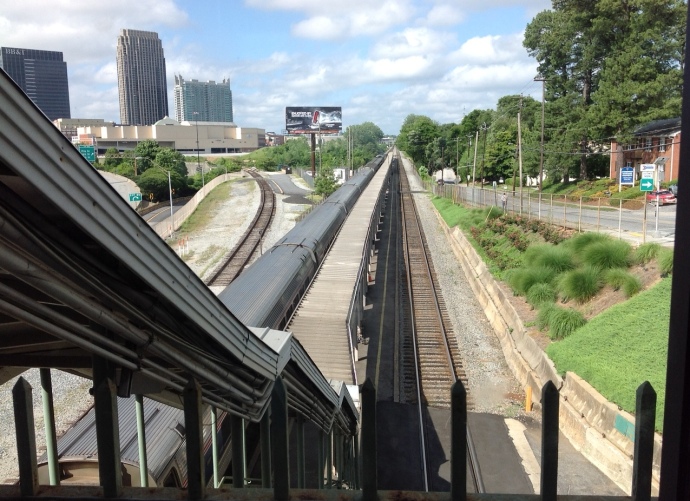
Our first train — #19 on The Crescent Line — arrives in Atlanta to take us to Birmingham, Alabama.
On some legs of this journey, we reserved coach seats. The ride from Atlanta, GA, to Birmingham, AL, had a delayed departure due to a live wire on the tracks somewhere in Virginia, but once underway, proceeded uneventfully. The Crescent Line begins in New York and goes to New Orleans. We quickly learned why our fellow coach passengers traveled with blankets. The AC was cranked up and it was COLD inside that car. Thank goodness for jackets and sweaters.
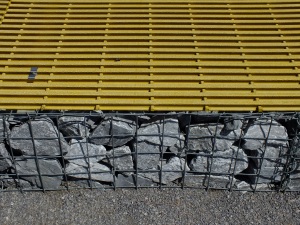
close-up detail of wire, rock and metal slat combination used to create benches in Railroad Park, Birmingham, AL
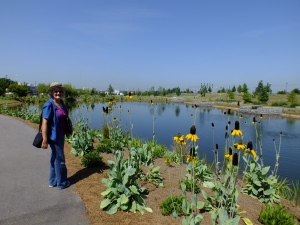
Railroad Park in downtown Birmingham, Alabama, a few blocks from the Amtrak station, is full of wide open spaces used by walkers, joggers, symphony performances and yoga classes, to name a few. It was a featured stop on the Birmingham Botanical Garden’s Leaf and Petal Glorious Gardens tour.
The Crescent Line continued from Birmingham, AL, to New Orleans, LA, a day-long trip for which we booked a roomette. I napped in the upper berth using both mattresses as Bill stayed seated upright in the seats below giving him a chance to wander around to the lounge and dining car. This line had some older equipment so our roomette featured a sink and toilet. Shower was down the hall. Seats were wide, roomy and comfortable. In this sleeping car, roomettes lined one side of the car with a narrow windowed aisle on the other side.

poster for the Crescent Line — loved the graphics throughout this journey
The New Orleans, Louisiana, train station features some of the most amazing frescoes I’ve seen in a long time. The New Orleans Union Passenger Terminal (NOUPT) was designed in 1949 and opened in 1954 at which time it was considered an ultra-modern facility.
Featured are 120 feet (2,166 square feet) of murals depicting New Orleans and Louisiana history painted by Conrad A. Albrizio with the assistance of James Fisher. Albrizio was a renown art professor at Louisiana State University. The murals in four parts depict the ages of exploration, colonization, conflict and the modern age. The murals were restored after Hurricane Katrina.
For more information on New Orleans’ railroad history dating back to 1831, see the Amtrak link: http://www.greatamericanstations.com/Stations/NOL/Station_view
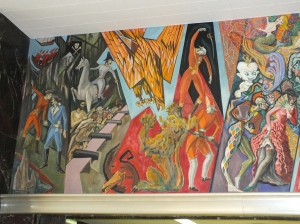
one section of the colonization panel
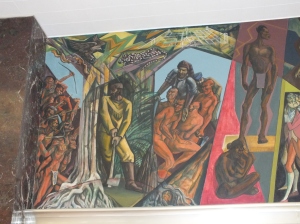
one section of the exploration panel
New Orleans is served by three lines: Crescent, City of New Orleans with service to Chicago, and Sunset Limited with service to Los Angeles. Our next leg of the journey would be aboard the Sunset Limited which used to go all the way from Los Angeles to Orlando, Florida but the section of track beyond New Orleans has yet to be replaced after Hurricane Katrina. Our train left New Orleans before noon and arrived in San Antonio, Texas in the middle of the night.
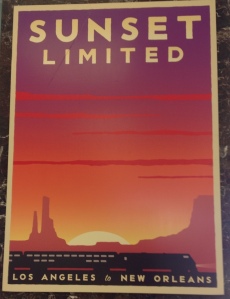
one version of the Sunset Limited poster
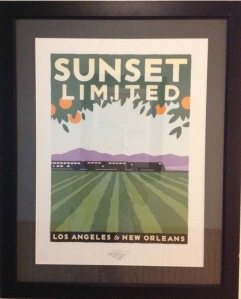
From San Antonio to Chicago, with several stops along the way, we were aboard the Texas Eagle. Sometimes we were in coach. For the long leg from Fort Worth, TX, to St. Louis, MO, we were in another roomette, this one in newer equipment that featured roomettes on both sides of a central aisle.

K.T.’s window seat in coach with plenty of leg and elbow room, loads of space for carry-on baggage above plus beneath seats. Note the different color tags stuck in a rail indicating to the conductor that passenger’s stop.
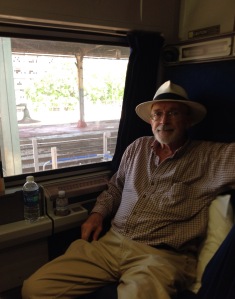
Bill enjoys the view from the large windows in this typical roomette. The upper berth drops down to just above the top edge of the window — still plenty of headroom for the person in the lower seat, but the upper berth in some sleeping cars can be rather close to the ceiling of the car.





















